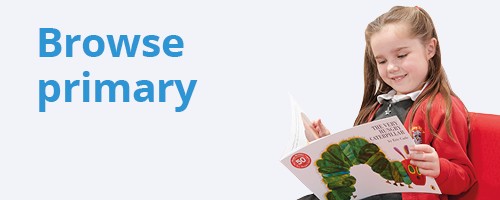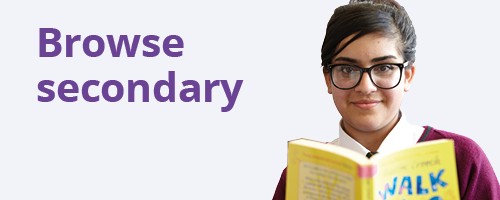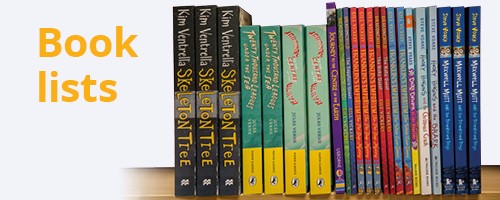For help, advice and telephone ordering call our team on 0121 666 6646
Are you sure you wish to delete this basket?()
This action cannot be undone.
Sorry, something went wrong
Please report the problem here.
The Space We're In - Q&A with Katya Balen

October 28th 2020
Katya Balen studied English at university, and completed an MA researching the impact of stories on autistic children’s behaviour. She has worked in a variety of SEND and educational settings, and is co-director of Mainspring Arts, a not-for-profit that supports neurodivergent and autistic people to access creative opportunities.
Her first novel for children, The Space We're In, was shortlisted for the Branford Boase Award and won the Teach Primary Book Award. Her second book, October, October, was released this month.
Q: You’ve worked in a number of SEN schools and co-founded Mainspring Arts, a charity that works across the arts to provide opportunities for neurodivergent people. How did these experiences help form the inspiration for The Space We’re In?
I've worked with neurodivergent children, and later adults, since I was 14. I'd met so many families and been a small part of their stories and their lives. I have a good memory, which I think helps when you're a writer, and I remember them all. That meant they were always in my head, which led to the story forming in my mind. I suppose it was something that I felt I knew about, but from that 'outsider' perspective, which is one of the reasons my main character Frank isn't autistic himself.
Q: There has been lots of discussion around representation in children’s fiction when it comes to cultural diversity, but less so around portrayal of young characters with neurodivergence. Was this gap something you were aware of when you were writing the book?
Absolutely. When I was working with neurodivergent people and their families, often in creative and therapeutic ways, I really struggled to find books that reflected their experiences. I co-founded Mainspring Arts in order to give a platform to more neurodivergent voices in the arts, and I knew that I didn't want to take that voice myself. I'm neurotypical, so it wasn't my story to tell. But stories about siblings' perspectives are important too. Children should be able to see themselves in books, and also read about experiences that are different to their own. If those two things can happen, then understanding and empathy can develop. Since I first wrote TSWI, I've been so pleased to see more and more stories written by and featuring neurodivergent people. The brilliant A KIND OF SPARK by Elle McNicholl was Waterstones' October BOTM, which shows there's a real appetite for neurodiverent stories and creatives.
Q: The Space We’re In is your debut novel – what made you start writing, and how did you find the writing process?
Unemployment! Funding cuts shut down the Early Intervention Hub I'd been working at, and we'd moved to a new area where I knew no one. I was looking for a job, and my days were suddenly a lot freer than they'd ever been. I'd always secretly wanted to write, so I took a chance.
I found a lot of the writing process quite stressful. I wish I were one of those people brimming with plots and ideas, but I'm just not. I always start with a very small, bare-bones idea and try to build it from there. That can result in a lot of worry about whether the story will be interesting or exciting enough. When it all comes together though, that's a pretty great feeling.
Q: Do you have a writing routine?
When I'm actively writing, I'm quite disciplined. I tend to mull over a small idea for months, and then I write relatively quickly. I set a daily word target and stick to it as much as I can, ticking off a chart each day. I've genuinely considered getting stickers to motivate myself. Generally I don't write too early in the morning, or too late at night. Sometimes 1,000 words can take me an hour and sometimes it can take me all day. I try to write quite 'clean' - I find it very hard to move on to the next scene if I don't think I've written the previous one well.
Q: The title of the book draws on one of the story’s other key themes: the universe, stars and stardust that Frank’s neighbour tells him everyone is made of. Can you tell us a bit more about how this theme is interwoven throughout the book?
Frank loves codes - he finds a new language in them, a way to unlock his own ideas and thoughts. He discovers the golden ratio, the set of proportions that are said to link everything in the whole universe, and this theme is threaded through the story. He can't quite believe that he and his brother are connected by much, but through these big ideas of the universe, codes, golden ratios, and stardust, he starts to see the things that hold them together. The story is about those huge ideas but told in tiny moments - the same way we can see the golden ratio in a whole spiral galaxy and also in the swirl of a snail's shell.
Q: The book features black and white illustrations by Laura Carlin. What was the process for developing the illustrations alongside the text – did you work together on this?
Laura is so unbelievably talented. My editor and I went through the scenes I thought I'd like to be illustrated, and Laura came up with her own list too. Some of her ideas matched mine, but some of them were so much more insightful and beautiful. She really dug beneath the meaning of the words and into the raw emotions. I think that illustrators have this incredible instinct for what will work, and I trusted Laura completely.
Q: Your second book, October, October is a very different story but also explores the experiences of a neurodivergent child. How easy or difficult was it to convey October’s worldview in your writing, and how did you go about it?
It's funny, I didn't intentionally write October as a neurodivergent child. A lot of people have said this about her though, and I completely see why. I think that my intention was to make her behaviour believable for a child who has never experienced much outside her world of the woods. October grows up isolated and wild, and then has to leave everything she's known and move to London. If you've never seen more than about five people all at once, never been on a train or a bus or a tube, never been in a classroom or a playground, never even lived on a street with other houses, then all of those things are going to be completely overwhelming and strange. That meant there was a lot to think about. All the things most people probably don't even notice are completely new to her, so I had to keep making sure she commented on them or noticed what others might not. I kept either going on, or imagining going on, walks through familiar areas of London, and trying to notice everything. I fell into a rhythm after a while and it became easier to predict and write her reactions.
Q: What are you working on next?
I am just finishing my third book with Bloomsbury. It's a dual narrative about two very different children who find themselves thrown together, much to their mutual fury. I'm planning my fourth book, but that's very much in the 'tiny idea, mull it over for months' stage of development.
The Space We're In and October, October are out now.









